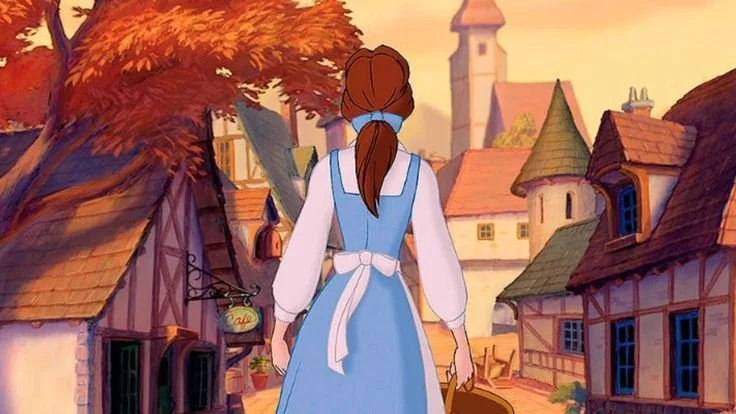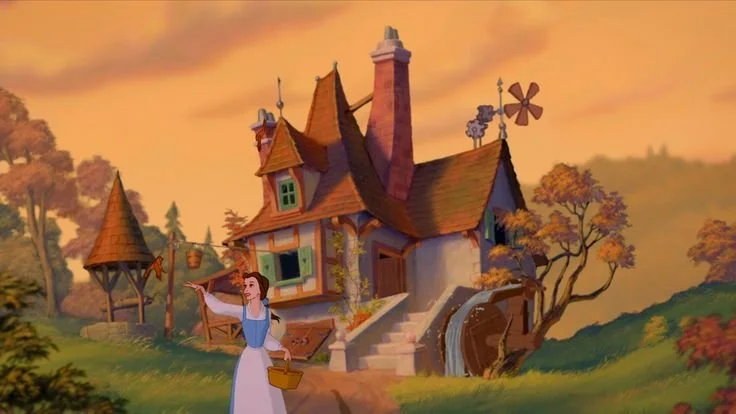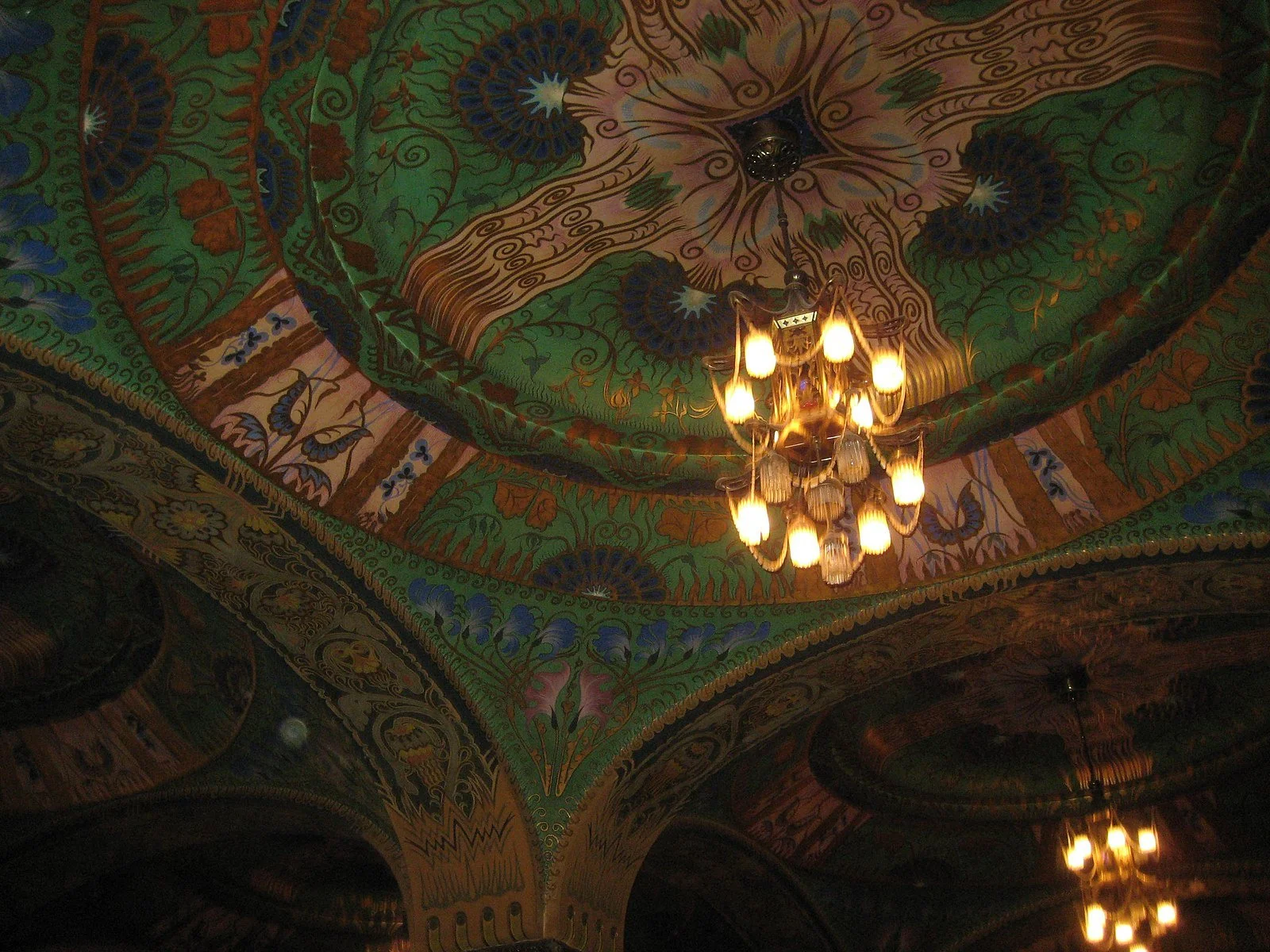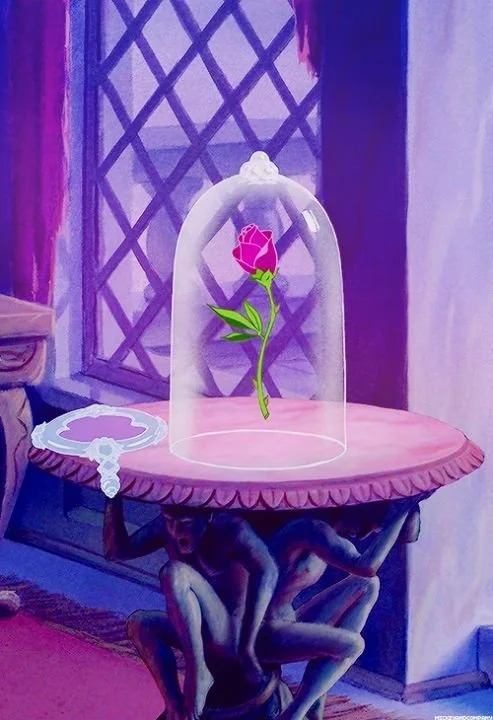Beauty & the Beast (Disney 1991) Romania Fairytale Travel Guide
Most will whisper “Alsace, France” when you mention Beauty and the Beast—its timbered villages and winding streets seem straight out of a storybook. And yes, the village feels right. But the castle they name as inspiration to the Beast’s Castle? That’s where the fantasy falters.
Château de Chambord in the Loire Valley, the most often cited inspiration of the Disney film animation, is too broad, too pale, and too horizontal—it doesn’t soar with the brooding, vertical intensity of the Beast’s fortress.
Château de Chambord in Loire Valley, France
Beyond the Loire, across the Carpathians, Romania rises with towers and forests that feel sculpted from the shadows of legend itself. Here, the Beast is no mere fairy tale; he is the same primordial archetype as Dracula, a figure of power, mystery, and hidden heart. In villages nestled between misted hills, in castles that pierce the sky, and in forests where an enchanted rose might bloom, the story moves from imagined to lived.
This post is the first step in a journey through fairytales made real. We begin with Beauty and the Beast in Romania, but each destination in this travel series will hold its own story—villages, castles, forests—where fairytales, old and new, come alive.
The Capital City of Romania
Begin your journey in Bucharest, where hidden courtyards and grand boulevards whisper stories of centuries past. Linger here a day or two to orient yourself and soak in the culture.
From here, a rental car becomes your chariot, carrying you through villages, castles, and forests on your own schedule. The road to Sibiu, the first stop on this looped voyage, takes roughly 3 hours and 40 minutes—long enough to watch the landscape transform from the streets of the capital to the misted hills of Transylvania.
For those curious about alternate routes or modes of travel, Rome2Rio offers a helpful guide for trains, buses, and flights into this smaller city.
The Village of Beauty






Sibiu, Romania
Sibiu feels like the village Belle wanders through as her story begins. It has the right intimacy: narrow cobblestones, warm façades, and a single proud spire rising above the rooftops like a quiet compass. Nothing here overwhelms the senses. Instead, the town unfolds in a soft, steady way that echoes the animated village almost instinctively. When I compared all the places across Romania, Sibiu simply held the closest match in scale, mood, and silhouette.
The two other main contenders within the country were Sighisoara and Biertan, each beautiful in their own right. Sighisoara’s jewel-like colors and stacked medieval lanes make it a fairytale showpiece, but it also has multiple spires competing for attention, creating a busier skyline than Belle’s simpler village silhouette. Biertan, meanwhile, has a stunning historic core, but its fortified church sits directly in the center of town. In Beauty and the Beast (1991), the castle stands apart, watching from the distance rather than anchoring the village itself. By contrast, Sibiu preserves the feeling of a world where Belle’s daily life and the Beast’s looming mystery remain separate, making it the most faithful real-world match in Romania.
Details of Sibiu, Romania
-
Stained glass windows, clock faces, and ballroom color tones matching Beauty and the Beast (1991).
-
Saint Mary Evangelical Cathedral reflects the soft palette of Belle’s original, pastoral dress, with a tall, singular spire that recalls the signature silhouette of her animated village.
-
A traditional folk home with rooflines that tilt in the opposite direction, this house reflects the same charming geometry seen in Belle’s animated home.
-
Preserved at the ASTRA Museum of Traditional Folk Civilization, this Transylvanian interior echoes the gentle, storybook charm of Belle’s cottage.
-
Although more elaborate than the stone arch in Belle’s animated village, the red flowers along The Bridge of Lies bring a fairytale feeling.




Although Sibiu possesses some quaint stone archways as seen in the Beauty and the Beast (1991) animation, I chose to highlight something more unusual: the Bridge of Lies. This black cast-iron bridge links the city to the inner square where the cathedral rises, and it carries a stack of legends heavier than its ironwork. Its name first came from a linguistic twist. Built in 1860 without supporting pillars, German speakers called it the “lying bridge” because it seemed to rest on nothing. Over time, “lying” blurred into “lies,” and the stories followed.
That’s where the bridge’s strange duality comes in. On one side, it became the stage for lovers promises, some tender and some treacherous. Young couples met here to swear devotion, while others supposedly hurled partners from the railing when hidden truths came to light. On the other side sits the legend that if you lie while standing on the bridge, it will collapse under you. The threat is almost playful, almost grim, and very Transylvanian.
Due to these tales, the Bridge of Lies is a place where couples pause, hold hands, whisper vows, and make private promises—sometimes in marriage. It sits between trust and danger, romance and ruin, and that tension is exactly what gives it its charm.
The Curse of the Rose
Before the tale of Beauty and the Beast (1991) truly begins, there is a garden—and a rose that sets everything in motion. I Giardini di Zoe (Zoe’s Garden) was dreamed into being by an Italian far from home, who planted winding paths and blooming hedges with a love for memory and a touch of mischief. Its labyrinthine paths twist like the lair of a minotaur, whispering of legends both monstrous and romantic. Amid the maze, roses peek out from flowerbed corners, daring visitors to pluck one before moving on to the castle.
It’s a small act, but in the world of fairytales, even the simplest choice can ripple through a story, setting destiny into motion.
The Castle of the Beast
This fortress goes by many names and each feels like a different mask the Beast might wear.
You’ll see it called Corvin Castle, Hunyadi Castle, and Hunedoara Castle. “Corvin” comes from the Latin word “corvus”, meaning raven, which gives the place a shadow in the shape of Edgar Allan Poe.
A raven castle perched on volcanic rock already sounds like it’s halfway in a fairytale where the prince can turn monstrous at any moment.
Due to this, the castle has fed legends for centuries. Its stone towers, angled roofs, and long wooden bridge over the deep defensive pit make it one of the most dramatic Gothic fortresses in Europe.
It is one of the sites often woven into the locations said to inspire the Dracula mythos, mostly because of its association with the 15th-century ruler John Hunyadi and its later attached stories of Vlad the Impaler.
Inside the grounds, the mood shifts between chivalric and uncanny. Most notable is the famous well said to be dug by Ottoman prisoners who believed they would win their freedom once they struck water.
According to the legend, they carved a message on the well’s wall: “You may have water, but you have no heart.”
Whether true or not, the legend adds a faint chill of broken promises to the atmosphere around the castle, a thread connecting neatly to the Bridge of Lies lore in Sibiu, as if the road from Belle’s “village” to her Beast’s “castle” carries a quiet warning about vows, love, and the cost of lies.
The Hidden Library
Tucked away in Alba Iulia, the Biblioteca Batthyaneum Library is a hidden gem that feels as though its stepped straight out of a fairytale.
Its vaulted ceilings, rows of centuries-old tomes, and hushed corridors evoke the quiet majesty of the Beast’s own library—a place of secrets, knowledge, and hidden discovery. Unlike more frequented tourist sites, this library sees few visitors, which only adds to its charm; it feels private, almost as if it were waiting for someone like Belle to wander in and unlock its wonders.
The library’s collection, rich with rare manuscripts and early prints, whispers stories across the centuries, inviting a sense of reverence and curiosity.
For a fairytale traveler, it’s easy to imagine pausing here, tracing the spines of books, and feeling the kind of wonder and awe that transforms a simple room into a world of magic.
The Black Forest
As a real-world stand-in for the Black Forest in Beauty and the Beast (1991), Hoia Baciu is almost too perfect. The forest sits west of Cluj-Napoca like a whispered warning, its trees bending and curving at odd angles, as if grown under some unseen pressure.
For decades, visitors have reported strange lights drifting between the trunks, sudden drops or surges in electromagnetic fields, and physical sensations—nausea, headaches, the feeling of being watched—that seem to rise from the ground itself. One investigative team, (Destination Truth, 2009), filmed a crew member being lifted and thrown by an invisible force, later revealing long, vertical scratches down his arm—the kind of marks a Beast might leave.
At the center of these woods lies the Poiana Rotundă, a perfect circular clearing where no trees grow. It feels less like a meadow and more like a pause in reality, a place where stories hesitate before choosing their shape. In the Disney animation, the Black Forest is alive with fear and possibility—a place where the tale cracks open for both Belle and her father. Hoia Baciu Forest delivers this same emotional beat, but with real earth beneath your feet. It is the darkest turn on the itinerary, the breath before the transformation, ensuring that what comes next feels not just cinematic, but earned.
The Enchanted Rose
In this chapter of your journey, the Enchanted Rose reveals itself in Târgu Mureș. A stroll through Roses Square (Piața Trandafirilor) sets the stage with flowerbeds of roses. Some landscaped sections even create rose motifs with the use of other blooms and flowers to trace the iconic shape of the rose across the city center, turning the square into a living, breathing emblem of the romance and enchantment of Beauty and the Beast (1991).
From the center, head to the Palace of Culture, a Hungarian Art Nouveau masterpiece built at the beginning of the 20th century. Enter the Hall of Mirrors to see twelve stained‑glass windows crafted by Miksa Róth depicting Transylvanian folk legends and Secession style architecture. It’s green ceiling mural depicts lavish roses, shown in the slides below, echoing the enchanted motif of the center square.




The Ballroom of Beauty and the Beast
For the last chapter of your story, Bucharest offers several palatial spaces that will feel like stepping directly into the Beast’s castle for the final waltz.
The Palace of the Parliament is a faithful match to the ballroom—vast, opulent, and drenched in grandeur. For those more enchanted by scarlet staircases, Cotroceni Palace also provides a striking alternative, with a ballroom that is an acceptable imitation. Similarly, the Bucharest National Opera combines a double red staircase (photograph comparison in the first section above), giving the option to experience a live opera amidst the cinematic surroundings.
Beyond Bucharest, the Regina Maria Opera in Oradea and Lucian Blaga Opera in Cluj-Napoca offer comparable grandeur and ornate interiors, but they remain honorable mentions for those exploring further afield.
Whether you choose to step into the spectacle of the Parliament, the historic elegance of Cotroceni, or the operatic drama of the National Opera, Bucharest ensures your Beauty and the Beast (1991) story ends on a note of true fairytale splendor.
The Laid-Out Route
The Beauty and the Beast route of Romania.
A. Bucharest → Sibiu
Time: ~3h 40m
Vibe: Highway curves into Carpathian foothills. Windmills. Meadows that look like Belle is about to walk out humming to goats.
B. Sibiu → I Giardini di Zoe
Time: ~2h 40m
Vibe: Cultivated, magical gardens. The enchanted rose moment realized—soft light, blooms, and a quiet sense of wonder.
C. I Giardini di Zoe → Hunedoara Castle
Time: ~30 min
Vibe: Gothic grandeur, vertiginous towers, shadowed halls. The Beast’s castle materializes in all its brooding intensity.
D. Hunedoara Castle → Biblioteca Batthyaneum
Distance & Time: ~90 km / ~1 hr
Vibe: A contemplative pause in vaulted halls, where centuries-old tomes echo Belle’s love of knowledge and discovery.
E. Biblioteca Batthyaneum → Hoia Baciu Forest
Distance & Time: ~120 km / ~2h
Vibe: Twisting branches and filtered light conjure a forest alive with secrets, anticipation, and the thrill of stepping into the unknown.
F. Hoia Baciu Forest → Târgu Mureș
Distance & Time: ~85 km / ~1h 45 min
Vibe: Emerging from the forest’s shadow, the landscape brightens. Pastel façades, stained glass, and Art Nouveau curves welcome you into a city of light and color.
G. Târgu Mureș → Bucharest
Distance & Time: ~320 km / ~5h
Vibe: A long, swooping return through rolling hills and open skies, pulling everything back to Bucharest for the grand finale ballroom.
Happily Ever After
Thank you so much for reading my Fairytale Travel Guide. If you’d like to sprinkle a little pixie dust for me and my enchanted sidekick—the Siberian Husky often mistaken for a wolf—we’d be endlessly grateful.
Donations can be one-time or recurring, and every little bit keeps our Fairytale alive.
In future posts, we’ll wander further, tracing Beauty and the Beast to new destinations. Along the way, other fairytales will reveal themselves in unexpected places: quiet corners, secret gardens, and hidden grottoes where the world still feels half-dream, half-story, waiting for you to step inside.


















